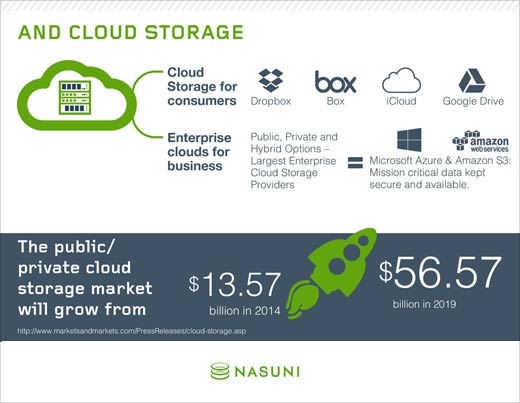File data is growing at an exponential rate. While that isn’t exactly breaking news for most observers, the rate at which data is growing still boggles the mind. Devices, applications and users all store more data than ever before, and for a variety of reasons – including compliance and analytics – data is rarely deleted.
But with technical challenges come new technologies, and, in this case, emerging enterprise storage that harnesses the power of cloud has stepped in to overcome these challenges. In this slideshow, Nasuni, a provider of Cloud NAS, will highlight the amazing growth in file data and what is being done to take control of this rapid expansion.
Overcoming the Data Deluge
Click through for more on the amazing growth in file data and what is being done to take control of this rapid expansion, as identified by Nasuni.
In 2012, 2.72 zettabytes of data were stored in the “digital universe.” By the end of this year, that number is estimated to reach 8 ZBs. That means, in a three-year period, we’ll have roughly tripled what it took to generate from the beginning until 2012.
While the technology we use for storage has improved dramatically, the rate of growth is still overwhelming. Up to 2.5 exabytes of data are created every 24 hours, and that number doubles roughly every three years. The unlimited storage potential of the cloud presents a solution.
One of the largest drivers of growth is unstructured data, everything from Word documents to email to multimedia files. More than 90 percent of new data will come from the unstructured category, and 80 percent of enterprises are liable for the storage, security and, in some cases, compliance of that data.
Following the rise of data is the rise of new storage systems designed to tackle them. Enterprise IT departments are required to optimize storage capacity, performance, cost, and energy use, which is why they require new storage systems to be scalable, software-defined and capable of replacing traditional backup systems. Additionally, they need to be secure and help keep enterprises from running afoul of compliance regulations such as HIPAA.
From a technology standpoint, no system can accommodate for the rapid growth of file data that doesn’t incorporate cloud storage in some way. An on-premises system would cost an exorbitant amount, and it would be nearly impossible to optimize for capacity given both rapid data growth and the now unworkable three-year sales cycle for traditional storage.
The public and private cloud storage market has already grown a tremendous amount, and it’s continuing to expand. The reasons are clear – the data deluge is here, and it’s not going away. For enterprises, the only way forward is through a combination of on-premises hardware and cloud storage, a hybrid system that provides high performance for users, simplified management for IT, and is easily scalable.









